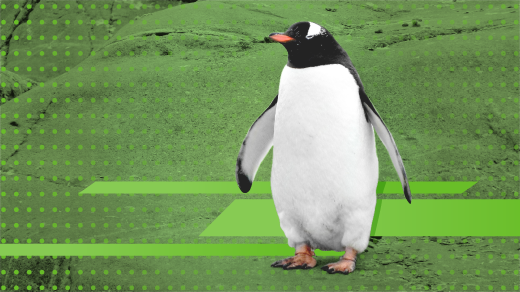In August 2018, Opensource.com posted a poll with seven options asking readers: What was the most important moment in the history of Linux? I thought I would expand on the list and present 10 moments that I think have played an important part in shaping the history of Linux.
1. Linus releases Linux
Linus Torvalds initially released Linux to the world in 1991 as a hobby. It didn't remain a hobby for long!
2. Linux distributions
In 1993, several Linux distributions were founded, notably Debian, Red Hat, and Slackware. These were important because they demonstrated Linux's gains in market acceptance and development that enabled it to survive the tumultuous OS wars, browser wars, and protocol wars of the 1990s. In contrast, many established, commercial, and proprietary products did not make it past the turn of the millennium!
3. IBM's big investment in Linux
In 2000, IBM announced it would invest US$1 billion dollars in Linux. In his CNN Money article about the investment, Richard Richtmyer wrote: "The announcement underscores Big Blue's commitment to Linux and marks significant progress in moving the alternative operating system into the mainstream commercial market."
4. Hollywood adopts Linux
In 2002, it seemed the entire Hollywood movie industry adopted Linux. Disney, Dreamworks, and Industrial Light & Magic all began making movies with Linux that year.
5. Linux for national security
In 2003, another big moment came with the US government's acceptance of Linux. Red Hat Linux was awarded the Department of Defense Common Operating Environment (COE) certification. This is significant because the government—intelligence and military agencies in particular—have very strict requirements for computing systems to prevent attacks and support national security. This opened the door for other agencies to use Linux. Later that year, the National Weather Service announced it would replace outdated systems with new computers running Linux.
6. The systems I managed
This "moment" is really a collection of my personal experiences. As my career progressed in the 2000s, I discovered several types of systems and devices that I managed were all running Linux. Some of the places I found Linux were VMware ESX, F5 Big-IP, Check Point UTM Edge, Cisco ASA, and PIX. This made me realize that Linux was truly viable and here to stay.
7. Ubuntu
In 2004, Canonical was founded by Mark Shuttleworth to provide an easy-to-use Linux desktop—Ubuntu Linux—based on the Debian distribution. I think Ubuntu Linux helped to expand the desktop Linux install base. It put Linux in front of many more people, from casual home users to professional software developers.
8. Google Linux
Google released two operating systems based on the Linux kernel: the Android mobile operating system in mid-2008 and Chrome OS, running on a Chromebook, in 2011. Since then, millions of Android mobile phones and Chromebooks have been sold.
9. The cloud is Linux
In the past 10 years or so, cloud computing has gone from a grandiose vision of computing on the internet to a reinvention of how we use computers personally and professionally. The big players in the cloud space are built on Linux, including Amazon Web Services, Google Cloud Services, and Linode. Even in cases where we aren't certain, such as Microsoft Azure, running Linux workloads is well supported.
10. My car runs Linux
And so will yours! Many automakers began introducing Linux a few years ago. This led to the formation of the collaborative open source project called Automotive Grade Linux. Major car makers, such as Toyota and Subaru, have joined together to develop Linux-based automotive entertainment, navigation, and engine-management systems.
Share your favorite
This is my subjective list pulled from archives of Linux articles and events throughout my career, so there may be other more notable moments that I am overlooking. Share in the comments. Also, the Linux history poll is still open for voting if you're interested.







11 Comments